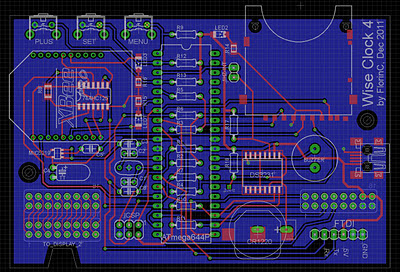This should be an update to a
previous post (I am too lazy to edit that nicely).
I bought two LiPo battery shields, one from
Seeedstudio, one from
cutedigi. None came with a LiPo battery. I guess it is assumed that the user selects the battery that suits his needs. My main need was for a battery that fit between the headers and was lower than the height of the headers, so that another shield can be stacked on top. Guess what: it's not easy to find such a LiPo battery. The round, AA or AAA-compatible ones, are out of the questions because of their size. The only candidates would be those silvery-flat-rectangular ones, as those pictured below.
The best match for the "
Solar charger" from seeedstudio is the third LiPo in the photo, with a capacity of 1,000mAh. For comparison, 3 AA rechargeable batteries (1.2V each, making a similar 3.6V) usually have a capacity of 2,200 - 2,800mAh. So this flat LiPo battery would be a bit less than half of the capacity of the space-consuming and heavy pack of 3xAAs.
The next photo shows the LiPo battery installed in the shield.
Updated Nov 4, 2001
The "solar charger" from seeedstudio I have is V1. It is currently discontinued and replaced by "Solar Charger Shield V2". I don't know if there was a technical issue with V1, but my shield has the male headers shorter than the regular size. While building CubeClock, I had trouble with the contacts: some of the signals (A0 and A1, required by the buttons on the mini display shield) did not get passed the charger shield. After some investigation I figured that the charger shield was the culprit, specifically the shorter pins. The new V2 charger shield seems (from the photos) to have solved this issue.
All of the above batteries were purchased from seeedstudio. The second from left in the photo is sold as the "
DSO Nano replacement battery" and dimensions were not published at the time. Now you can see it's a bit shorter than the 1,000mAh LiPo and almost 50% thinner.
A nice battery, size-wise and capacity-wise, is the right-most one in the photo. Although it does not fit on the top of the shield (and between the headers), it can be used underneath if you find a method for attaching it (I am still thinking).
Other bigger-capacity LiPos (e.g.
3,000mAh,
6,000mAh) are built by sticking together in shrink-wrap several of the ones shown above.
As for the
charger shield from cutedigi, I cannot find an immediate use for it. It can only be used as the top shield, since it does not have extension headers. Also, the space for battery is quite small. The 500mAh LiPo can somehow fit, as shown in the photo below.
The battery would also need to be attached somehow; plastic ties come to mind, maybe this is the purpose of the 6 holes in the board. The 3 LEDs (top-left corner) should be left visible, yet another restriction on placing the LiPo battery. Maybe it's not for nothing that "600mAh" is written in the silkscreen of the board. Cutedigi may have designed this charger shield for a specific battery, which they don't make available.
As always, your comments are appreciated.



































